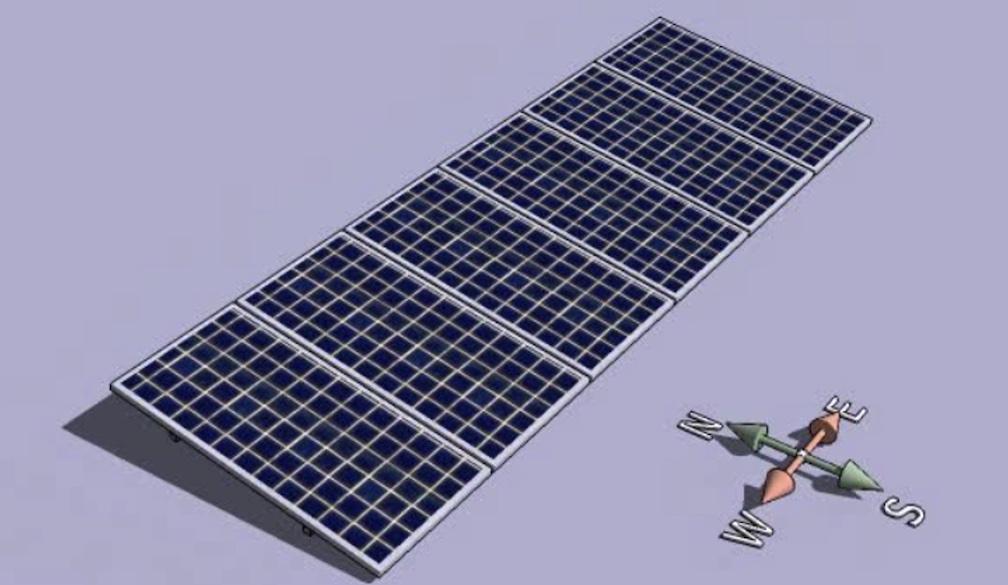Photovoltaic panels: inclination and orientation

Installing a photovoltaic system is undoubtedly a wise decision, given that it is possible to recover the entire investment in a time between 4 and 5 years based on the latitude and the specific conditions of the solar panels. Moreover, thanks to this type of installation, you can use clean energy to meet your home's energy consumption.
To obtain the maximum yield from a photovoltaic system, it is important to consider the orientation and inclination of the solar panels: two aspects that influence the system's production capacity.
In fact, with the right orientation and correct inclination of the panels, we can guarantee the optimal functioning of off grid solar system, make the most of it and increase the profitability of the solar modules.
The ideal orientation of the photovoltaic panels
The optimal orientation of the solar panels is towards the south. This position can be determined by considering the time of day, as the south corresponds to the sun's position at noon solar time.
However, two other aspects should also be considered:
- The orientation and inclination of the roof of the house
- Any items that may fall on the surface of the panels
The best solution to maximize the performance of the photovoltaic system and its energy production during the year is to install a system of "solar trackers" that allows the entire system to change orientation and inclination depending on the time of year, as happens in large photovoltaic parks and gardens.
However, for photovoltaic systems for domestic use, this solution is not feasible given the difficulties in installing motorized systems on the roofs of our homes. Furthermore, in the context of residential photovoltaics, this system would involve an unnecessary expense, given that the cost would be greater than the gain. It is, therefore, important to orient the photovoltaic panels as far south as possible so that maximum yield from the module can be obtained during the central hours of the day when the radiation is greatest. If necessary, you may need to buy some solar batteries Australia to store electricity for sudden power outages.
The orientation of the roof
Knowing the orientation of your roof to find out if it is possible to install a photovoltaic system is very simple. By accessing Google Maps and taking advantage of the street view mode, you will be able to understand the orientation of your roof since the lower part of the image represents the south.
If you want more clarity on the orientation of your roof, we advise you to speak to one of our Otovo consultants, who will analyze it and recommend the best type of panels for the type of roof considered.
Shadows and climate
Shades are another aspect to consider when installing a photovoltaic system since a shaded system does not produce energy at its maximum power. A possible solution against the effects of shading is installing optimizers, devices which allow the rest of the system to function correctly, even if a photovoltaic panel is shaded.
The task of the optimizers is to wirelessly transmit the individual modules' production data to maximize each panel's performance. Installing the optimizers on a photovoltaic system means ensuring continuous and real-time monitoring of the production of solar panels thanks to a data collection unit that helps to identify any anomalies of the single module.
In this case, if you want to monitor the entire system's performance, we recommend installing a smart meter.
Regarding the climate, in areas subject to heavy snow, it is advisable to install solar panels on steeply sloping roofs to allow snow not to accumulate on the modules.
The importance of the orientation of solar panels
Installing a PV system in the correct orientation is important to ensure optimal system operation. On the contrary, if the solar panels are installed in the wrong orientation, a large part of the potentially acquirable energy will be wasted, compromising the photovoltaic cells that make up the modules when not affected by the sun's rays.
The inclination of the solar panels
In Italy, the ideal inclination for solar panels installed on the ground varies according to the latitude in which the area of interest is located: the closer it is to the equator, the smaller the angle of inclination of the panels will be since the rays of the sun will fall perpendicularly.
Furthermore, to determine the inclination of the solar panels, we need to know in which period of the year we will have greater energy consumption. The highest consumption will not always be linked to the season that offers the least radiation. For that, it is important to consider the electricity bills.
On the other hand, for a residential photovoltaic system, the inclination of the solar panels depends a lot on the type of roof on which they are installed.
Conclusion
The orientation and inclination of the solar panels are two aspects of fundamental importance to consider when installing a photovoltaic system. These will influence the performance of the solar system.









